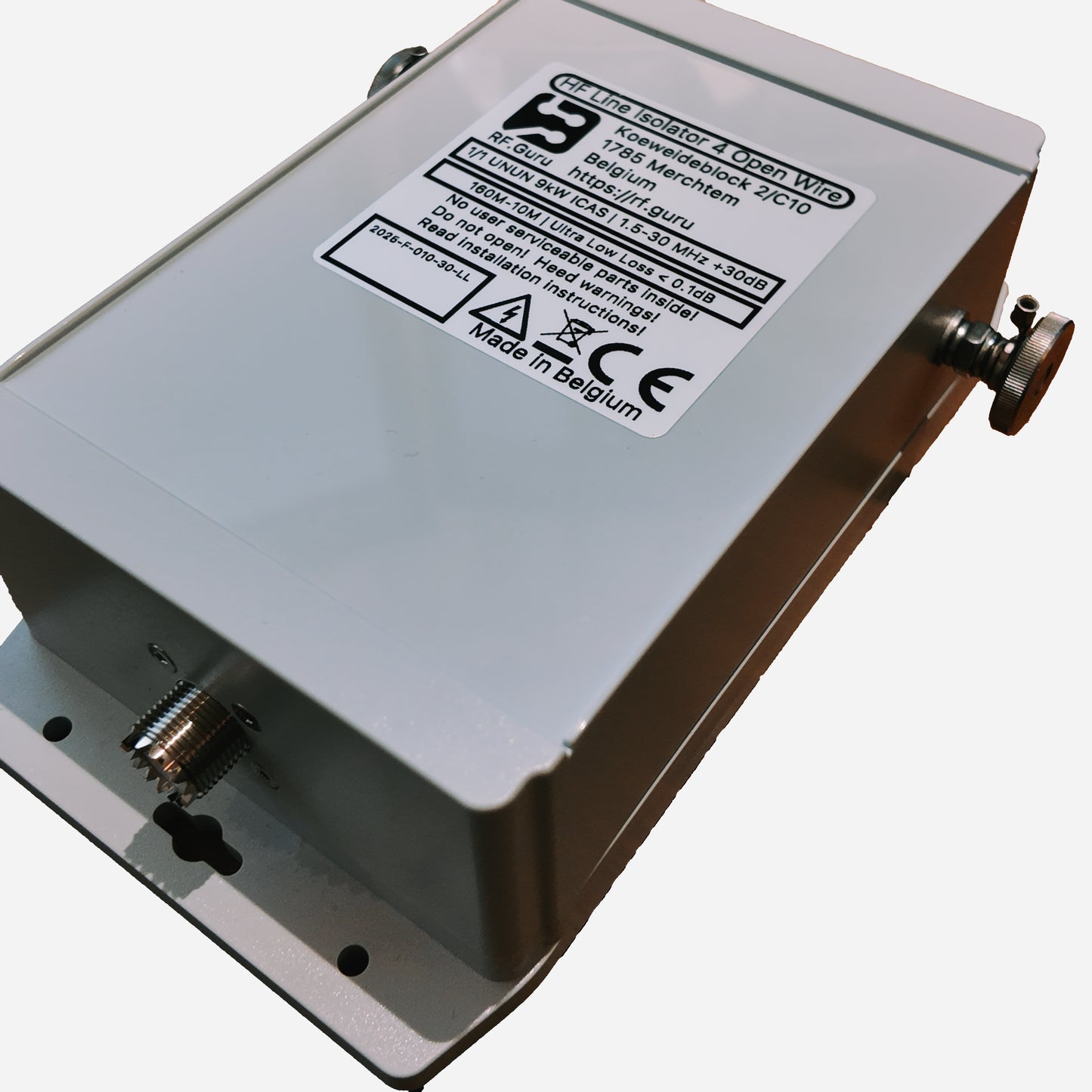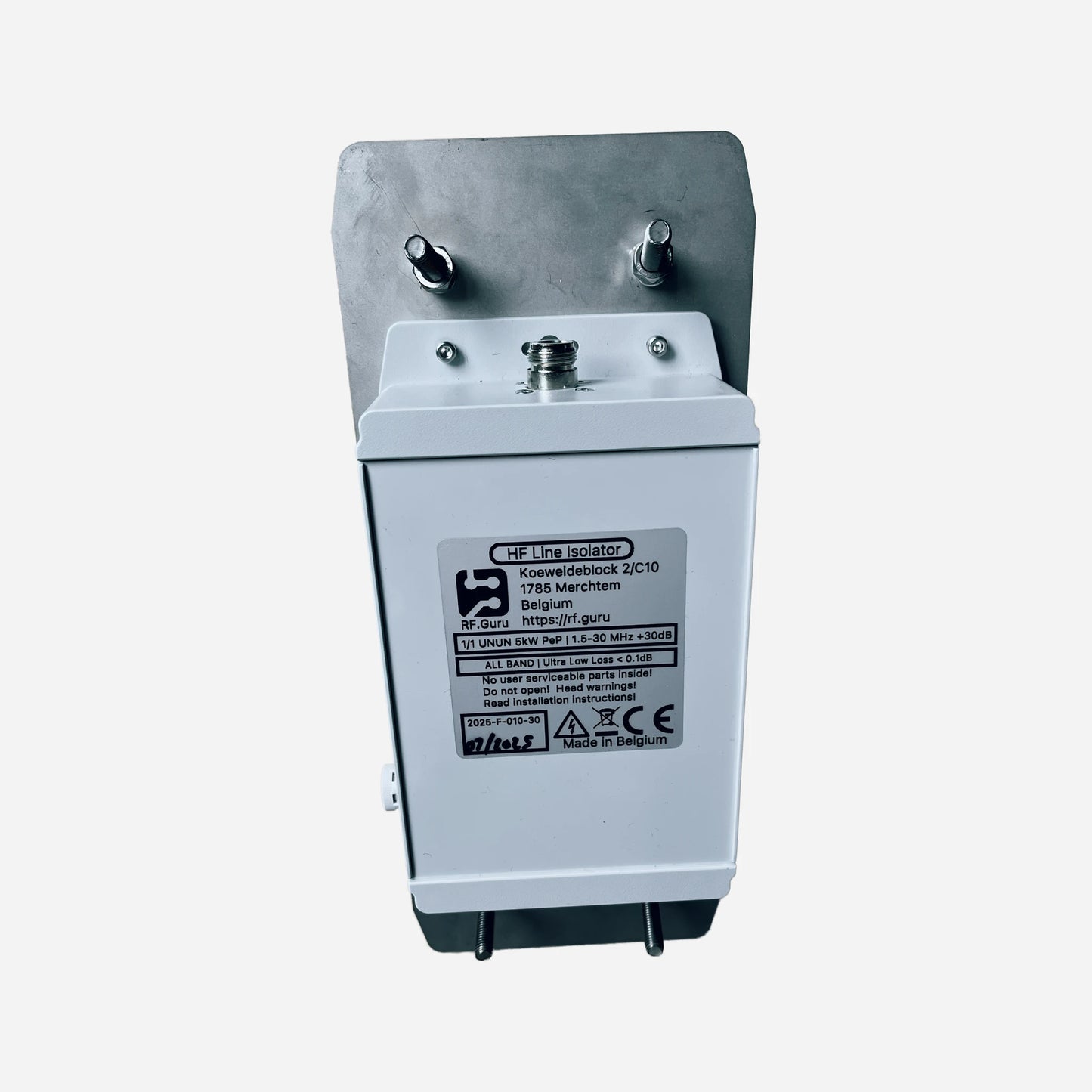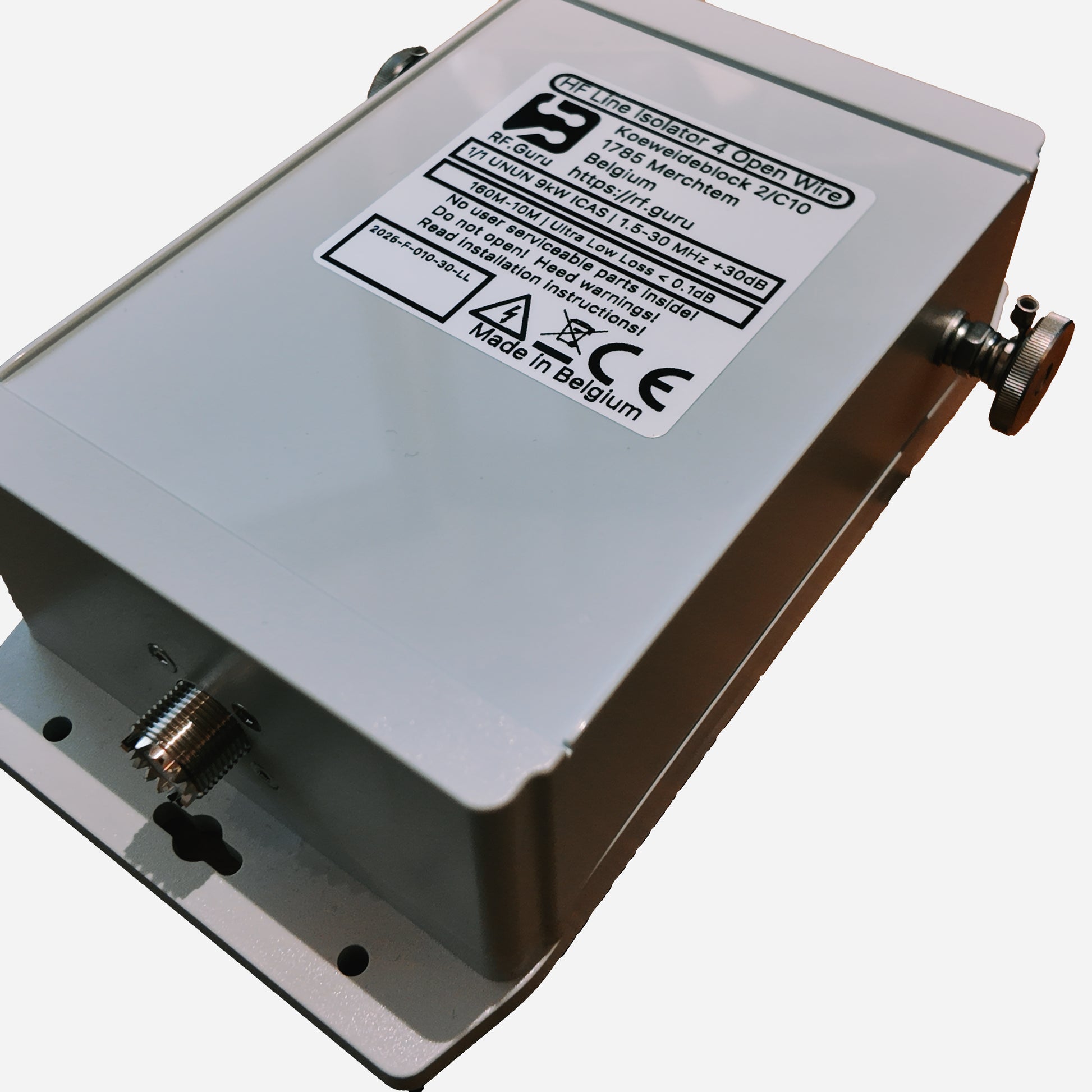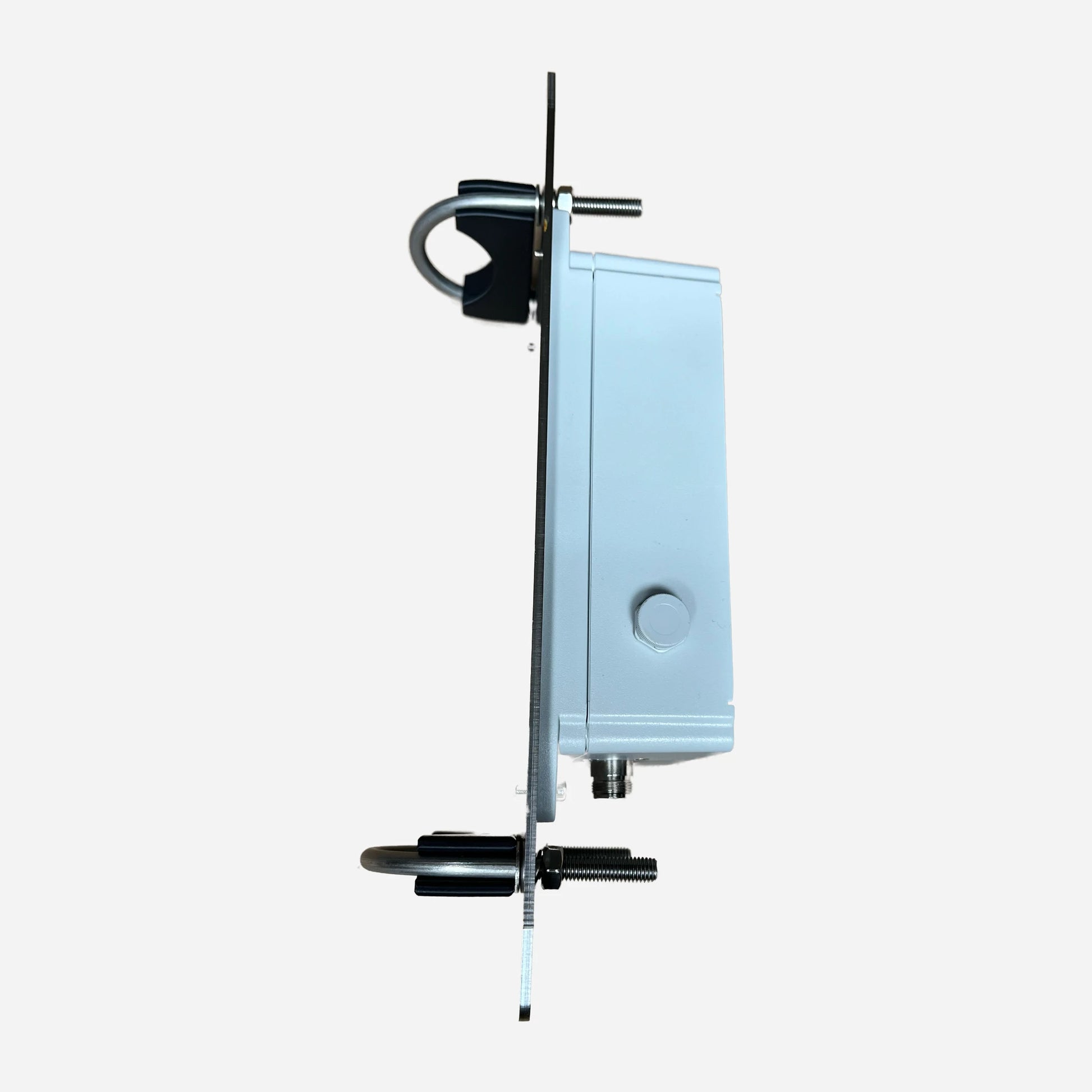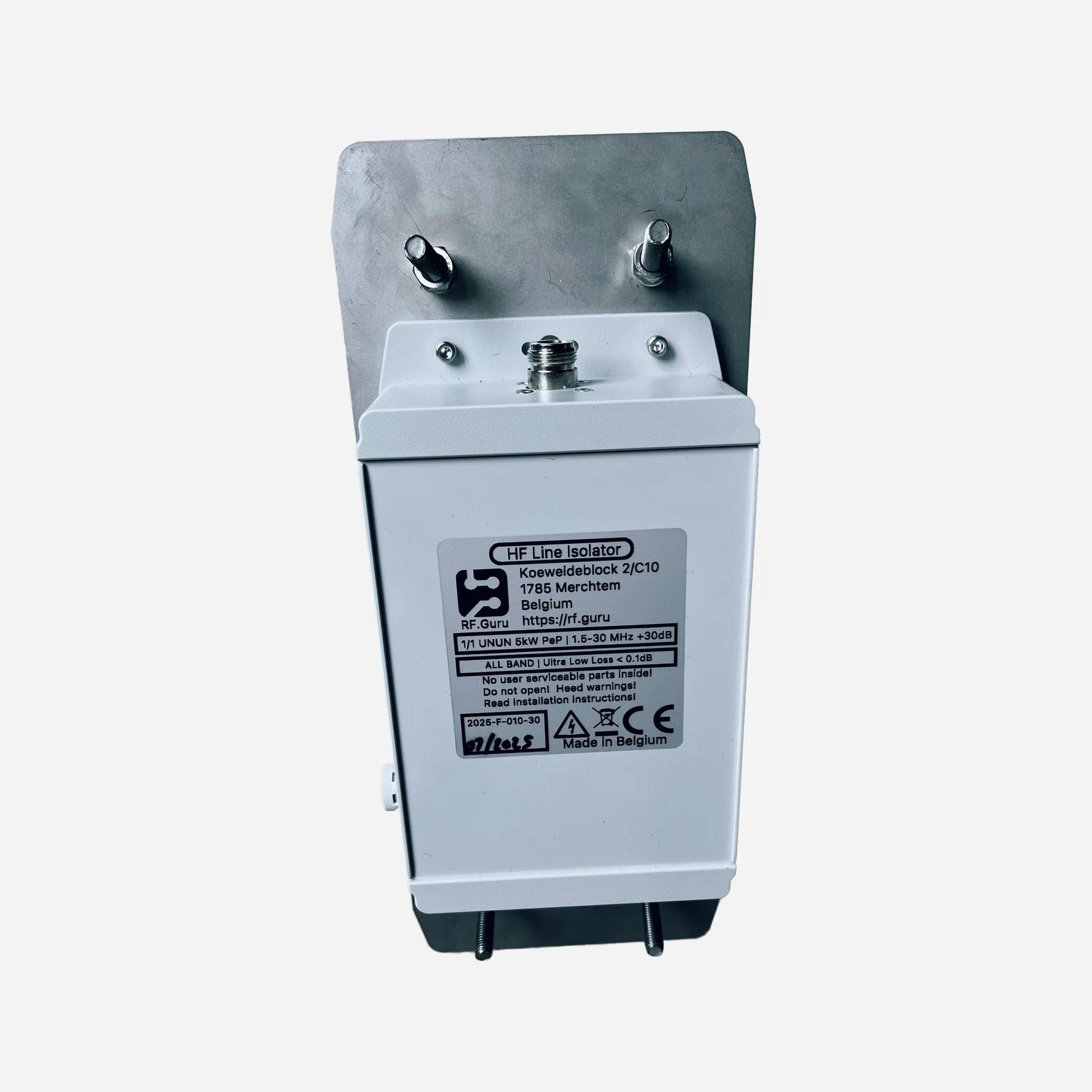RF Guru
3kW ICAS Dual Core 1:1 Antenna Tuner Current Balun Coax <-> Open Wire
3kW ICAS Dual Core 1:1 Antenna Tuner Current Balun Coax <-> Open Wire
Couldn't load pickup availability
The 3 kW ICAS Dual-Core 1:1 Antenna Tuner Current Balun (Coax ↔ Open Wire) provides a robust transition between unbalanced coaxial feed and balanced ladder-line or open-wire systems. It ensures perfect current symmetry and isolates the tuner or station ground from feedline-borne RF currents. Built on two stacked 4″ ferrite cores with Teflon-insulated twin lead inside Teflon sleeving (24 kV/mm), it’s rated for full legal-limit operation with very low loss and high voltage margin.
Correct Use of RF.Guru Antenna Tuner Baluns
Baluns in a Nutshell
How Much Choking Do You Really Need — for RX and TX?
Balanced Feed Transition for Tuners
This version features a single coax input (PL-259 or N-type) and two M6 stainless-steel output terminals for the balanced feedline. Each M6 bolt is isolated from the polycarbonate housing with Teflon spacers to prevent creepage and surface arcing — a critical feature under high-voltage mismatch conditions. It is ideal for use between an unbalanced tuner or amplifier output and a ladder-line antenna system.
Specifications
- Ferrite cores: 2 × 4″ (10.2 cm) toroids — dual-core stack
- Winding: 11 turns Teflon twin lead in Teflon sleeving (24 kV/mm)
- Input connector: PL-259 or N-type (female)
- Output terminals: 2 × M6 INOX 316 bolts with Teflon spacers
- Enclosure: HV-coated polycarbonate (IP64) with silicone gasket and pressure valve
- Power rating: 3 kW ICAS / 1.2 kW CCS continuous
- Frequency range: 1.5 – 30 MHz (usable to 54 MHz)
Measured Performance (Single Unit)
Measured using EMC-standard common-mode injection methods under load. Values are conservative and verified experimentally.
| Band | Choking Impedance (Ω) | Common-Mode Rejection (dB) |
|---|---|---|
| 160 m | 6.0 kΩ | 47.6 dB |
| 80 m | 8.0 kΩ | 50.1 dB |
| 40 m | 3.0 kΩ | 41.7 dB |
| 30 m | 1.0 kΩ | 32.3 dB |
| 20 m | 0.8 kΩ | 30.4 dB |
| 17 m | 0.7 kΩ | 29.2 dB |
| 15 m | 0.6 kΩ | 28.0 dB |
| 12 m | 0.5 kΩ | 26.4 dB |
| 10 m | 0.4 kΩ | 24.6 dB |
For extended isolation, you can add the 4-terminal 3 kW ICAS Antenna Tuner Balun in series with this coax-fed model. This setup doubles the common-mode rejection across all bands, ensuring seamless coverage from 160 to 10 m.
Alternatively, for even higher isolation on the 17–10 m range, place the 10 kW ICAS Quad-Core High-Bands (30–10 m) choke in front of it using a short coax jumper.
Mechanical Highlights
- Dual-core architecture for extended thermal and magnetic headroom
- Teflon twin-lead wiring with high voltage sleeving (24 kV/mm)
- Two M6 stainless terminals with Teflon spacers for creepage protection
- IP64 UV-resistant polycarbonate housing with HV coating and gasket
- Weight: approx. 700 g
All RF.Guru baluns are tested using true common-mode injection methods. Residual current is measured with a precision current probe to derive Common-Mode Rejection (CMR in dB). This procedure reflects actual field suppression rather than differential VNA plots and complies with EMC measurement standards.
Mini-FAQ
-
Q: Can I connect it directly to my tuner or PA output?
— Yes. Use the coax input (PL-259 or N-type) to connect your tuner or amplifier and the M6 outputs for your ladder line. -
Q: Are the output terminals insulated from the housing?
— Yes. Each M6 bolt uses a Teflon spacer to prevent creepage and surface arcing over the polycarbonate surface. -
Q: Can I use two baluns in series for more isolation?
— Yes. Two in series increase CMR by ≈ +30 dB across all bands or combine this model with the 4-M6 tuner version for the same boost. -
Q: Is it weatherproof for outdoor use?
— Absolutely. The housing is IP64-sealed and UV-resistant for long-term exposure. -
Q: What power rating does it support?
— 3 kW ICAS / 1.2 kW CCS from 1.5 to 30 MHz.
Interested in more technical content? Subscribe to our updates for deep-dive RF articles and lab notes.
Questions or experiences to share? Contact RF.Guru.
Share
